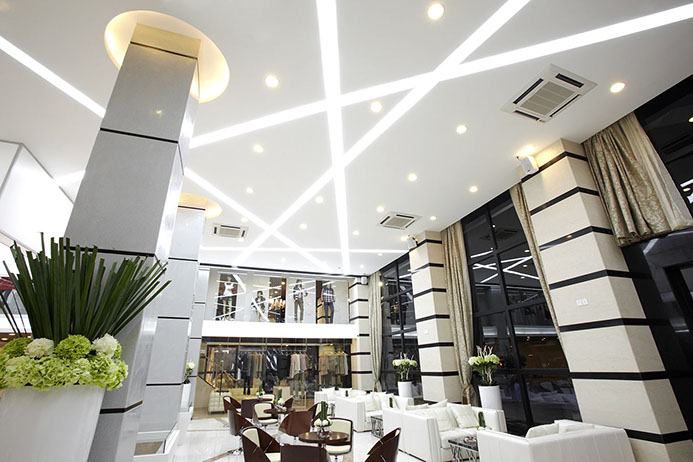

Concepcion Building and Industrial Solutions (BIS), the commercial arm of air-conditioning and refrigeration systems leader Concepcion Industrial Corp. (CIC), recently spoke at the American Society of Heating, Refrigerating, and Air-Conditioning Engineers (ASHRAE) Chapter Regional Conference in Manila to discuss with engineers and building owners and managers the solutions to the challenges that currently beset the hotel industry.
“Buildings utilize 40 percent of global energy consumption,” shares Michael Dauden, Director for Strategic Marketing and Business Development of Concepcion-Carrier Air Conditioning Company (CCAC). “These include hotels, offices, malls, schools, factories, airports, and hospitals. The industry and manufacturing segments consume 32 percent, followed by transportation at 28 percent.”
“In the United States, 40 percent of the power consumed by these buildings goes to heating, ventilation, and air-conditioning (HVAC) technologies. For hotels in tropical locations like the Philippines, 45 percent of the overall energy required by the building is consumed by chiller plants. This is why it’s very important to select the proper chillers in order to cut down on costs while still providing sufficient cooling,” he continues.
Concepcion BIS recommends energy-efficient technologies that reduce operating expenses and increase the savings of hotel and building owners, as well as BPO offices, manufacturing plants, retail buildings, and other verticals in the Philippines. The group’s solutions are most relevant at a time when Manila now ranks first among the cities in Asia with the highest energy costs, with Cebu coming in third after Singapore, which ranks second in the region.
One of the primary reasons for energy waste by buildings, explains Dauden, is the difference in priorities between the developer and the building operator. Developers primarily consider initial costs, such as installation and equipment costs, while building operators prioritize operating expenses, which are higher, such as power costs and equipment maintenance.
Another challenge is modifying the way we consider chiller efficiency. “Engineers often select chiller performance at 100 percent load condition,” says Dauden, when, in fact, the chiller’s efficiency is even lower when operating at part-load. “The important factor to consider is the chiller’s efficiency when running at part-load conditions.” He adds that buildings also waste energy when the air-conditioning system does not undergo proper and regular service and maintenance.
“Concepcion BIS believes that higher awareness on green building, the amount of energy that buildings consume, and the impact this entails on global warming is crucial for engineers and building operators,” Dauden shares. For example, he refers to the R22 refrigerant, which will be outlawed in 2020 for environmental reasons, as well as the R123 in 2025, and how investing in them now will only mean a waste of expenses.
Ted Jagusztyn, Project Director of CCAC, explains that a hotel has different needs–from the needs of the hotel guest to those of management and of the hotel owner. Concepcion BIS addresses all these through tailored solutions, from a hotel room that requires quiet air-conditioning (AC) units to AC systems in the lobby that can adapt to changing temperatures from the external environment, as well as retrofitting services that ensure continuous savings on electricity.
Jagusztyn also introduced the concept of a heat machine, a new technology that works more efficiently than a traditional hot water heater. A hot water heater produces one kilowatt of hot water for one kilowatt of electricity. The heat machine, on the other hand, works by converting the natural heat contained within the hotel rooms and recycling that heat to produce four kilowatts of hot water for every one kilowatt of electricity.
Slow and traditional elevators are still common in the Philippines and can have a negative impact on a building’s overall value. Sean Losty, the General Manager of Concepcion-Otis Philippines, suggests that buildings switch to Otis’ advanced destination dispatch system called Compass Plus, which beats traditional elevators by using a smart grouping technology that separates building floors into zones.
This technology avoids overlapping destinations, minimizing the passenger’s waiting time to his destination by 50 percent and can reduce overall energy consumption by up to 47 percent. It also increases the building’s value and improves the experience of its tenants.
Meanwhile, advances are also being made in elevator technology, as part of efforts to reduce energy consumption of elevator systems in a building. The Gen2 Switch, for example, is an elevator technology from Otis that is primarily battery-operated, thus allowing it to be used even during a blackout and requires only 0.5 kilowatt of installed power to operate—less than the amount of energy it takes to power a blow dryer or a microwave oven.
Rothman Loh, the General Manager of Sales for Carrier Singapore, says that a building can achieve and ensure energy savings through retro-commissioning and turn-key retrofitting.
He addresses the misconception that energy-saving investments like these are expensive by saying that not retrofitting actually costs more. For instance, the Furama City Center Hotel in Singapore now saves about 16 percent on its electrical bill every year after replacing the existing chiller with a newer, more appropriate unit. Loh points out that hotels and other buildings in the Philippines can take advantage of these solutions that hotels in ASEAN have already benefitted from.
Meanwhile, Rajan Komarasu, Group Director of Concepcion BIS, notes, “There are plenty of savings opportunities available to building owners and managers that the different solutions of Concepcion BIS can make possible. We hope that more building owners and managers will begin to include sustainability and energy efficiency in their agenda, which can be achieved along with energy savings through these new technologies.